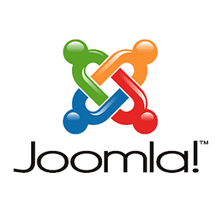Web Design Best Practice
We all know this process - we do a search on Google, find the ideal website, navigate through their system and purchase a product or find the information we need. It is quick, full of useful information, user friendly and streamlined. But what is it that makes these sites really work, easy to find and so user friendly? We know the ones we like, so how do we ensure our own is as good if not better?
Below is a list of essential web design best practises which will help make the difference between a successful or a failing website:
1: be found by your potential customers
Every day there are thousands of people on the net searching for what you do. Using a very sophisticated algorithm, the search engines will rank your website for these different search phrases or 'keywords'. Understanding which keyphrases to target and how much business they will generate is our job. We will conduct thorough research of these keywords and in conjunction with you, define the niche areas we will optimise your website for. This has the potential to bring a stream of new customers to your website.
We will be very honest and realistic with you about what phrases you will be able to compete, depending on your budget. Always at the centre of our thought process is how we will get the most bang for you buck.
1. Choice of the search term to rank for. If it is too competitive, it will take a long time to rank. Less competitive and you are more likely to reach the first page of the search engines easily. But will this bring you sufficient traffic? Selecting the right keywords to rank for is essential.
A company like ours could choose the word "web design" to rank for, but in reality that would not bring them the right profile of customers, and achieving a ranking on a national phrase might be difficult. A local phrase like "web design cornwall" might be a much better choice.
2. Have lots of pages full of text on the site. Google ranks pages individually, so the more you have, the more traffic your site is likely to get. Adding pages regularly is also essential to keep both users and search engines interested and maintain your page rankings, which is why we prefer using content managed websites like Joomla and Wordpress wherever possible. You can log in, add a page and save it. Google indexes the page. Visitors come to read it. Easy.
3. Links to your site. Links to your site act as votes of popularity, so the more you have (and the better quality they are), the higher your site will rank. Link building typically happens after the design phase, however we include it here for the sake of completeness. If your web design plan doesn't factor in link building then the site will never attract many visitors. But you must ensure they are relevant and of good quality, as these factors are both more important than quantity. Google is also likely to penalise your site if it has too many poor quality links from irrelevant sites.
4. The right kind of content. Search engines index words. WORDS! So other forms of content, while pretty, engaging and all the rest, will on the whole not bring you visitors. So if your web designer is proposing a "really clean look" just images on the page with plenty of white space around it, just remember that no words = few / no visitors. Flash is another big issue with internet marketers. Although it can look lovely (winning the designer all kinds of accolades), search engines don't index it very well at all, and it sometimes even scares them away. Occasionally a Flash website will contain no words at all apart form the domain name and meta perhaps, which means there is virtually nothing of the Flash site to be indexed.
2: convert visitors to customers
This is another huge subject, but if we were to look at a few of the key points they would be...
1.First impressions count You have about one second to be interesting enough to keep the visitor on the page. The decision is made mainly on your headline. If you don't have a clear text headline, or it does not contain what the user wants in an attractive format, they will be gone. If the page takes too long to load they will be gone. The headline is SO important!
2. Don't distract your visitors with bewildering backgrounds, fonts, moving messages, irrelevant links and so on. Look at Google and Amazon - plain black font on a white background. Easy to read, you turn no-one off and keep everyone on the page.
3. Call to action Each page should have its own call to action, whether it is a "buy now" button, a sign up form, a "contact us for more information" or just a "read more" link. Make it clear and easy to follow and try and give an interesting and compelling reason to do so. The old salesman's adage is "don't be afraid to ask for the sale". Neither should your web page be.
4. Credibility A million people on the web are trying to sell, scam and generally use any means to get hold of your cash. Why should you be any different? A good way to demonstrate your crecibilty is with the style and manner of your page, the quality of what you write. If it's really useful and interesting then you demonstrate your value to the visitor. If it's just a sales pitch, perhaps they'll run off pretty fast. Testimonials are another great way to establish your credibility - ideally you should use real people with real names and faces as stock photography can be offputting.
3: build the brand
This is the bit that your graphic designer will go mad for. Logos, images and a co-ordinated page that matches your brochure and other corporate documentation. Whilst this is extremely important, and if your intention is to build a brand that will be recognised then this must be pursued, but you should never lose sight of all of the other intentions behind building your website or the other priorities that make up any web design project.
Basic quality is vital too - if its a cheap looking site then how do you rate the quality of the provider?
4: invite them back
Another old sales adage - "It takes 8-10 visits to close the typical sale"
How then do you think your website will close a sale after only one visit? If you want to convert your visitors to customers you will have to engage with them at a much deeper level, which you can only do if you invite them back. So you need to capture their details, which they will be happy to hand over if you can offer them something sufficiently interesting and compelling. Traditionally, this would involve capturing the email address and adding it to your subscriber list for future high quality email marketing. Done well, you should continue to deliver quality information of the type they first came looking for, until you become their natural first port of call for information on the topic. Once you've achieve this you should have established a relationship of trust, perhaps without ever having spoken or met. The step to their buying from you is then only a small one.
Another good way to engage with your existing and potential customers is, which is becoming increasingly prevalent, is Social Networking. If you can invite the visitor to join one of your networks then you will be engaging with them in the longer term, and have the opportunity to build trust - just as with good email marketing. Social Networking is all the rage right now, as the billion or so Facebook and Twitter users will attest. However it is more difficult to target your message in the way with email marketing. It is also time consuming to do it well, so many still use email marketing as the primary tool for inviting visitors back to the website.
While email marketing or social networking do not have to be part of the web design process in the strictest sense, if you have not factored them it is unlikely that you will achieve the best possible results from your site. It should be part of your overall web marketing strategy, if not so much part of the site design.
Web Design Summary
So I hope you get the gist - it's not just about how your website looks! (although that's important too!) Every one of the elements I've mentioned should be factored into your web marketing plan to ensure your website helps you achieve commercial success by making it "fit for purpose", drawing in vistors and customers.





